Bastion
LQ: 9.15
Recommended Age: 10+
Skills Used: Planning, Working Memory, Mathematics, Reading
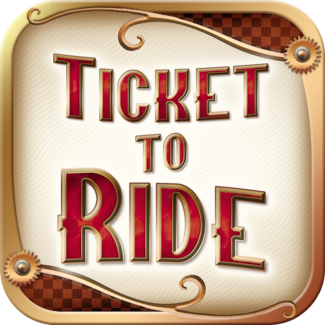
App Store | Android | Xbox | Steam | Days of Wonder
Ticket to Ride is a digital adaptation of the popular railroad-themed strategy board game by the same name. Ticket to Ride can be played locally (pass-and-play style) and online with up to 4 live or AI opponents, with the goal being to travel to as many cities as possible by train. Players must choose at least two route tickets at the start of the game, and each turn will have the opportunity to either take two train cards from the deck or complete sections of a route with train cards of the corresponding quantity and color. Points are given immediately upon completing sections of a route, and at the end for completed route tickets and to the player for the longest route. Players who fail to complete a route ticket in their possession will be docked points. While the Ticket to Ride starter map is only the United States, expansions include Europe, Switzerland, India, and Asia. Players who enjoy the game on one platform, such as an Android phone, can play against others on iOS or PC. Ticket to Ride is challenging, wholesome fun for the whole family, with the added bonus of exposing players to history and geography. We recommend the game to players aged 6 and older.
Adapting and adjusting to changing conditions and expectations.
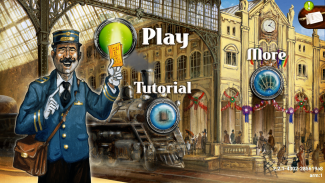 Turn-based board games are ideal for practicing flexibility because a player is only in control of the game when it's their turn, and even then they are at the mercy of dice and cards and timers. A digital adaptation of the original board game, Ticket to Ride is especially good flexibility practice because it gives a player multiple options to recover when things don't go their way if they can relax and accept that a plan needs to change. Many sections of routes have two different color options, and there are even sections that allow a player to use cards of any color to claim a route. If an opponent’s claim is in the way of completing a ticket, there is always a different path to take, even if it takes a bit more time and effort.
Turn-based board games are ideal for practicing flexibility because a player is only in control of the game when it's their turn, and even then they are at the mercy of dice and cards and timers. A digital adaptation of the original board game, Ticket to Ride is especially good flexibility practice because it gives a player multiple options to recover when things don't go their way if they can relax and accept that a plan needs to change. Many sections of routes have two different color options, and there are even sections that allow a player to use cards of any color to claim a route. If an opponent’s claim is in the way of completing a ticket, there is always a different path to take, even if it takes a bit more time and effort.
Arranging and coordinating materials in order to complete a task.
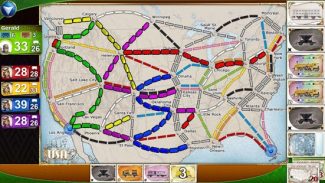 The organization thinking skill gets a lot of exercise in a game like Ticket to Ride, with its cards and routes of multiple colors. In more complex variations of the game, found in the expansions, there are even different kinds of routes that can require extra cards or combinations of wildcards and color cards to claim. In a game of Scrabble, a player uses their rack to form words from the tiles they draw before they play them on the board. A Ticket to Ride player must do much the same thing, mentally, with the cards they collect -- say, two blue plus a wildcard here, 5 of any color there, and a yellow and a pink. Accidentally using a color that is in rare supply on a route that can be claimed with any color, for instance, might mean a player spends the next few turns looking for more rather than completing tickets before the last final turn is announced.
The organization thinking skill gets a lot of exercise in a game like Ticket to Ride, with its cards and routes of multiple colors. In more complex variations of the game, found in the expansions, there are even different kinds of routes that can require extra cards or combinations of wildcards and color cards to claim. In a game of Scrabble, a player uses their rack to form words from the tiles they draw before they play them on the board. A Ticket to Ride player must do much the same thing, mentally, with the cards they collect -- say, two blue plus a wildcard here, 5 of any color there, and a yellow and a pink. Accidentally using a color that is in rare supply on a route that can be claimed with any color, for instance, might mean a player spends the next few turns looking for more rather than completing tickets before the last final turn is announced.
Developing a systematic approach for setting and achieving goals.
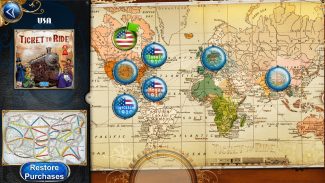 Planning and organization often go hand-in-hand, and playing a strategy game like Ticket to Ride is no exception. Planning is a skill required throughout the game, and staying mentally organized makes it easier to plan the next few moves because there is a lot of quick decision-making involved. The thought process during a typical turn might look like this: I see two pink cards in the draw pile, and I really need pink to complete one of my tickets. But I need six and already have 4, and it looks like my opponent might go for that orange section that I need and I have enough to claim that. Strategizing is a lot of mental work.
Planning and organization often go hand-in-hand, and playing a strategy game like Ticket to Ride is no exception. Planning is a skill required throughout the game, and staying mentally organized makes it easier to plan the next few moves because there is a lot of quick decision-making involved. The thought process during a typical turn might look like this: I see two pink cards in the draw pile, and I really need pink to complete one of my tickets. But I need six and already have 4, and it looks like my opponent might go for that orange section that I need and I have enough to claim that. Strategizing is a lot of mental work.
Managing our actions, feelings and behaviors.
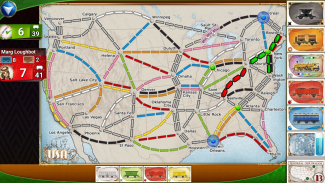 Of course, self-regulation is a necessary part of being a good sport and ensuring that opponents have a pleasant experience playing with you. But self-control also makes a player's own game more enjoyable. We've already covered why organization and planning are such important factors for strategizing in Ticket to Ride, so it stands to reason that placing cards on a whim can make completing tickets and getting a high score more difficult. Even decisions at the very start of the game -- placing cards or drawing cards -- can be important, depending on how aggressively an opponent plays. Resisting the urge to grab one more card rather than claim a route in danger of being claimed by another player can make all the difference.
Of course, self-regulation is a necessary part of being a good sport and ensuring that opponents have a pleasant experience playing with you. But self-control also makes a player's own game more enjoyable. We've already covered why organization and planning are such important factors for strategizing in Ticket to Ride, so it stands to reason that placing cards on a whim can make completing tickets and getting a high score more difficult. Even decisions at the very start of the game -- placing cards or drawing cards -- can be important, depending on how aggressively an opponent plays. Resisting the urge to grab one more card rather than claim a route in danger of being claimed by another player can make all the difference.
All membership plans come with full access to our entire suite of tools learning guides, and resources. Here are a few of the ones we think you’ll like the most: